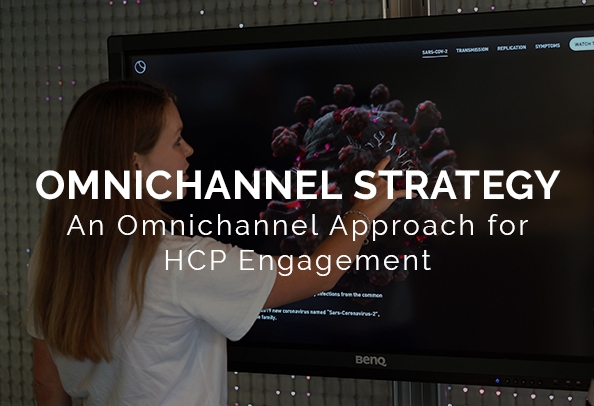The Art of a Successful Medical Animation Company
An Interview with Random42 CEO Ben Ramsbottom
With the global medical animation market expected to reach $430 million by 2025 and the virtual reality and augmented market in healthcare reaching $5.1 billion by 2025, we are going to see more and more competition in this area in the next few years. But not all medical animation companies are created the same. Some are a cut above, providing the perfect combination of experienced and qualified scientists with passionate, skilled artists.
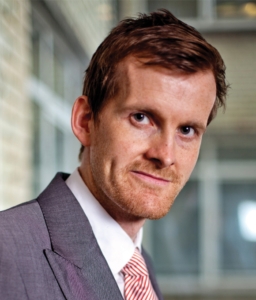
Today, we take a look at the art of running a successful medical animation company with Ben Ramsbottom, CEO and Medical Director at Random42; the largest and longest-running company within this space and winner of multiple awards. Below, we’ll cover exactly what makes Random42 an industry leader and what drives it to excel.
QUESTION 1
What makes Random42’s medical animation a better fit for pharma, biotech and medical device companies in comparison to its competitors?
Random42 was the first dedicated medical animation company in the world — winning more awards than any other business in this space. It was also the first to develop a dedicated in-house team of PhD scientists who work directly with our highly talented artists and programmers to produce something visually impactful as well as scientifically accurate.
The accelerated growth of Random42 has meant there has been a high level of investment within the company, which includes the early adoption of the latest technology to make the whole process faster and often the first to market with technology, such as, virtual reality, augmented reality and, now, mixed reality.
QUESTION 2
What would you say are the underlying principles of creating successful medical animation each and every time?
It is down to the quality of people we have hired over the years who have enhanced the process as we have grown. The depth of quality we now have within the company means that the process is a well-oiled machine. At each stage, there is a team of people checking and double-checking the output ahead of each deliverable being sent to the client. Due to the scale of such teams, extra capacity can be thrown at individual projects to make sure that tight deadlines are met with the right resources. It means that Random42 can now handle over 220 individual projects each year without a lapse in quality.
QUESTION 3
How does Random42 make the world we live in a better place?
Random42 is a big believer in R&D time, which has furthered our ability to visualise complex science as well as provide free access to some of our content. This includes our latest virtual reality showreel “Intercellular”, which can take people on a ride through the body. This content is freely available through Random42’s YouTube channel, as well on the Apple App and Google Play stores.
We also have the Friday Challenge, where our artists compete to produce a visually stunning image-based reference image. The winner is revealed in a social media post the following week — attracting interest from the scientific community as well as various artists around the world. These are just two examples of the many initiatives Random42 has created that are not related to specific client work.
QUESTION 4
What has been the secret behind your achievements and all the prestigious awards you have received through the years?
We approach each project as a mini-documentary, first developing a story flow that resonates with the viewer and then developing immersive environments inside the body, which are animated to produce the final cut. The documentary feel comes through the pacing of the experience, the camera movement and the lighting and drama added by a bespoke soundtrack and sound effects. The whole Random42 package is developed to entice and engage the viewer, whilst conveying each client’s key scientific messaging.
QUESTION 5
Medical animation is time and cost-efficient. Most pharma and biotech companies already know that. But do they really know the extent of that efficiency, and how do you go about making sure they do?
The return on investment from medical animation has grown massively over the last ten years. The improvements in fast broadband streaming mean that video content can be posted online, which, in some cases, can be viewed by hundreds of thousands of people. The only way that such content was viewed in the past was at a conference or on the laptop of a rep — its reach is now unlimited. This content can also be repurposed for lots of other uses, from static images used on websites and print campaigns to 3D models being used in virtual reality and augmented reality, as well as on interactive touchscreens. Showing such content is becoming progressively easier, enabling pharmaceutical companies to get their messages out to the world, without the expense of reps or even booth presence.
QUESTION 6
In your opinion, how does an organisation go about looking for the right medical animation company?
Quality is always key, from both a visual and scientific perspective. Clients are often very busy, and they want to make sure that the development of such work is in good hands. Speed can also be an important factor, which, again, is supported by the scale and technology employed by Random42 to get the best outcome as quickly as possible.
QUESTION 7
As the Medical Director and CEO at Random42, what is the most important thing you are working on right now and how do you plan to make it happen?
The growth of Random42 has been rapid over the last five years and my major role is sculpting an organisation that can adapt to the demands of the expanding influx of work. This involves creating a management structure that can support such demands — a task that is always ongoing.
QUESTION 8
What were the major drivers for you to start on what you are working on now?
Evolving the management structure is driven by the need to maintain quality within the business so that our output is still best in class. Another driver is rewarding the hard work of individuals so that they progress within the company and gain responsibility to drive their personal development.
QUESTION 9
What’s next for medical animation as an industry and what’s next for Random42?
Medical animation will always be the cornerstone of Random42, but success lies in the ability to take this and develop it into other interactive experiences, such as interactive virtual reality, augmented reality and mixed reality. Such technology only makes our experiences more immersive and will only improve as new technology comes to market. Every couple of months, a new bit of kit comes along that excites the team, leading us to think of ways this can be used to further our understanding of what goes on inside our bodies.
Are you interested in seeing how medical animation can help you?
Related news
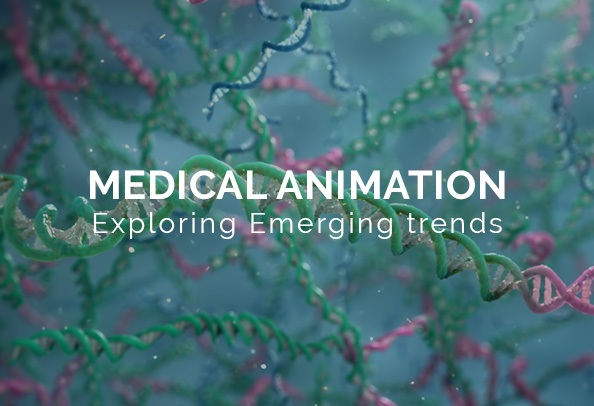
Emerging Trends in Medical Animation
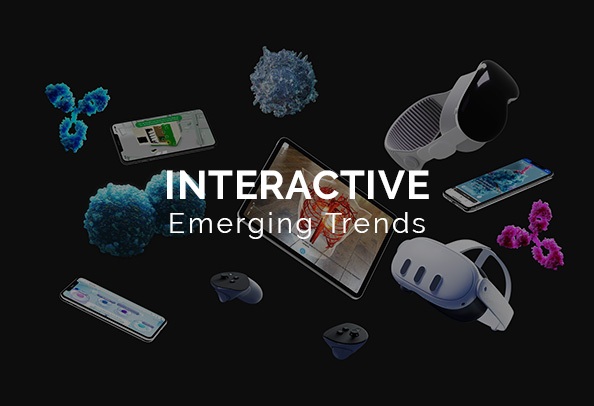
Emerging Interactive Trends
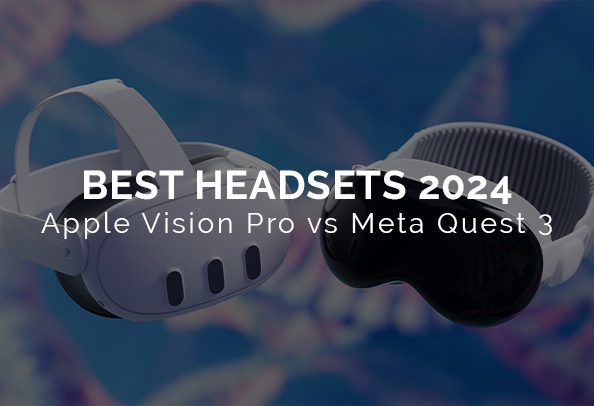
Best Headsets of 2024
